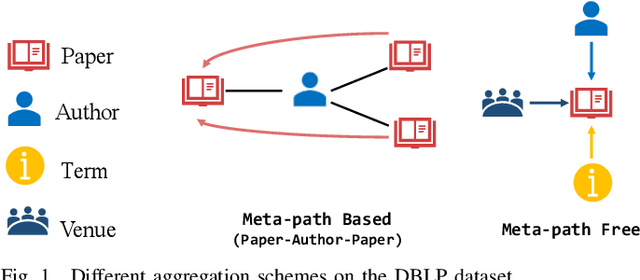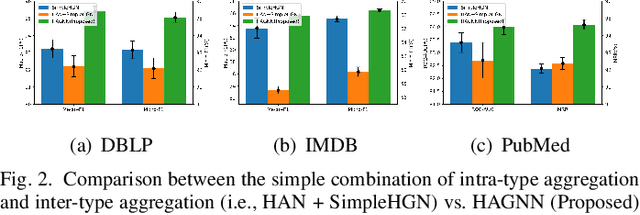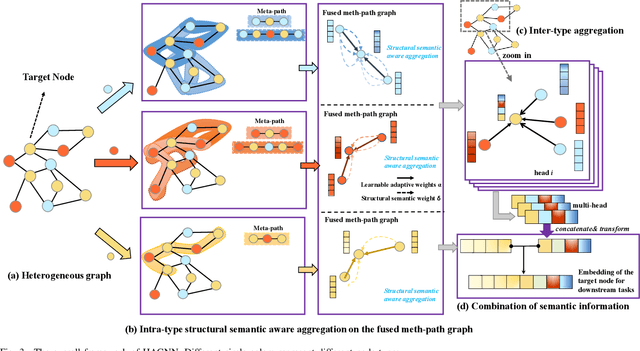Zhennan Zhu
HAGNN: Hybrid Aggregation for Heterogeneous Graph Neural Networks
Jul 04, 2023



Abstract:Heterogeneous graph neural networks (GNNs) have been successful in handling heterogeneous graphs. In existing heterogeneous GNNs, meta-path plays an essential role. However, recent work pointed out that simple homogeneous graph model without meta-path can also achieve comparable results, which calls into question the necessity of meta-path. In this paper, we first present the intrinsic difference about meta-path-based and meta-path-free models, i.e., how to select neighbors for node aggregation. Then, we propose a novel framework to utilize the rich type semantic information in heterogeneous graphs comprehensively, namely HAGNN (Hybrid Aggregation for Heterogeneous GNNs). The core of HAGNN is to leverage the meta-path neighbors and the directly connected neighbors simultaneously for node aggregations. HAGNN divides the overall aggregation process into two phases: meta-path-based intra-type aggregation and meta-path-free inter-type aggregation. During the intra-type aggregation phase, we propose a new data structure called fused meta-path graph and perform structural semantic aware aggregation on it. Finally, we combine the embeddings generated by each phase. Compared with existing heterogeneous GNN models, HAGNN can take full advantage of the heterogeneity in heterogeneous graphs. Extensive experimental results on node classification, node clustering, and link prediction tasks show that HAGNN outperforms the existing modes, demonstrating the effectiveness of HAGNN.
AutoAC: Towards Automated Attribute Completion for Heterogeneous Graph Neural Network
Jan 08, 2023



Abstract:Many real-world data can be modeled as heterogeneous graphs that contain multiple types of nodes and edges. Meanwhile, due to excellent performance, heterogeneous graph neural networks (GNNs) have received more and more attention. However, the existing work mainly focuses on the design of novel GNN models, while ignoring another important issue that also has a large impact on the model performance, namely the missing attributes of some node types. The handcrafted attribute completion requires huge expert experience and domain knowledge. Also, considering the differences in semantic characteristics between nodes, the attribute completion should be fine-grained, i.e., the attribute completion operation should be node-specific. Moreover, to improve the performance of the downstream graph learning task, attribute completion and the training of the heterogeneous GNN should be jointly optimized rather than viewed as two separate processes. To address the above challenges, we propose a differentiable attribute completion framework called AutoAC for automated completion operation search in heterogeneous GNNs. We first propose an expressive completion operation search space, including topology-dependent and topology-independent completion operations. Then, we propose a continuous relaxation schema and further propose a differentiable completion algorithm where the completion operation search is formulated as a bi-level joint optimization problem. To improve the search efficiency, we leverage two optimization techniques: discrete constraints and auxiliary unsupervised graph node clustering. Extensive experimental results on real-world datasets reveal that AutoAC outperforms the SOTA handcrafted heterogeneous GNNs and the existing attribute completion method
 Add to Chrome
Add to Chrome Add to Firefox
Add to Firefox Add to Edge
Add to Edge